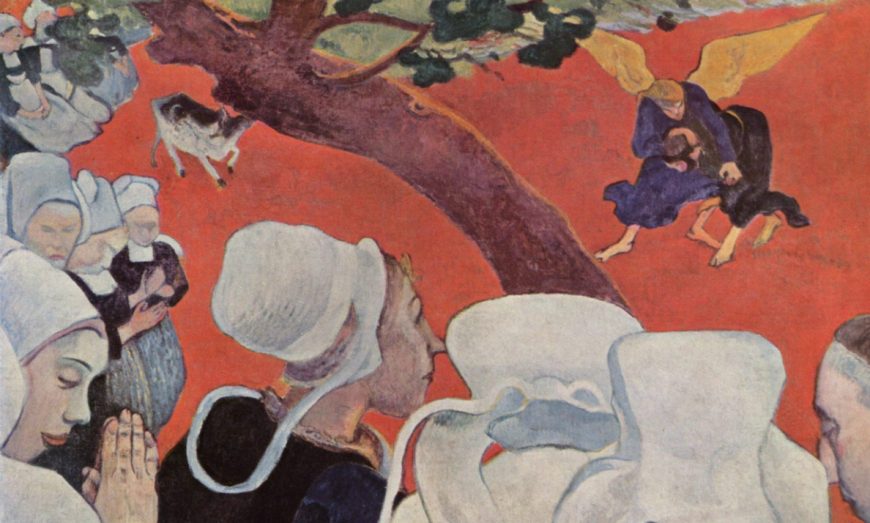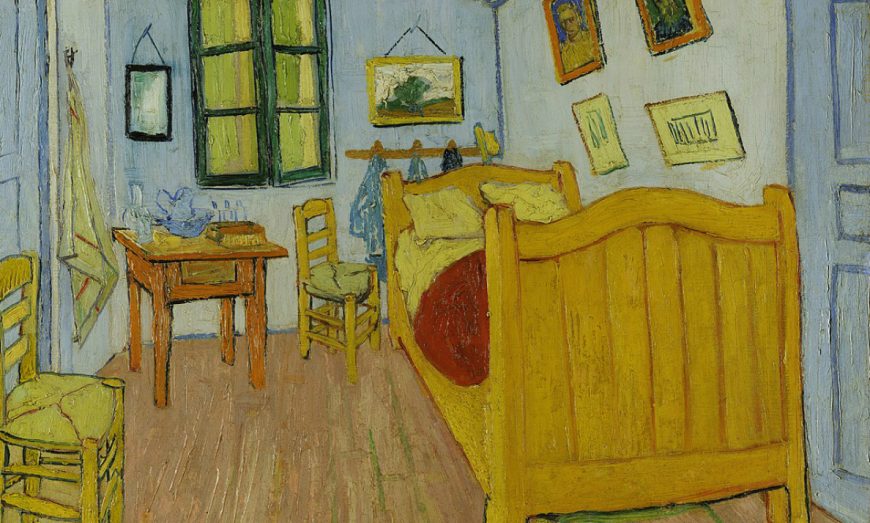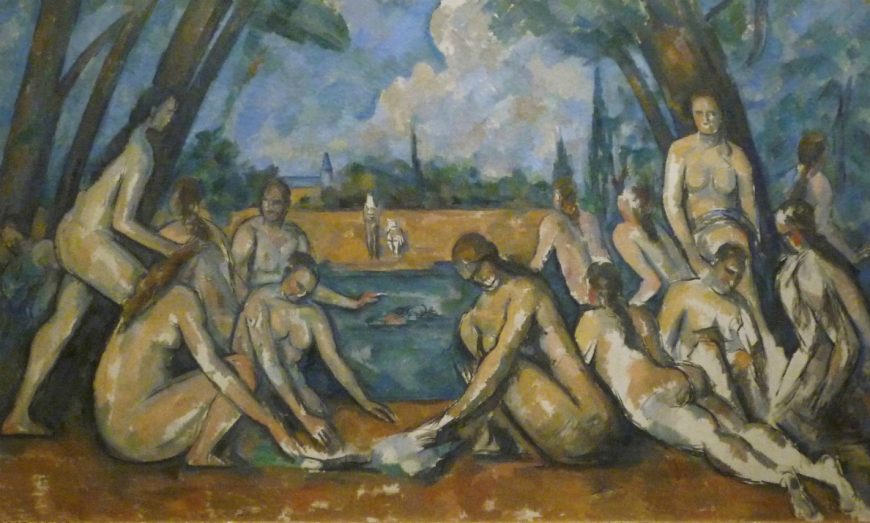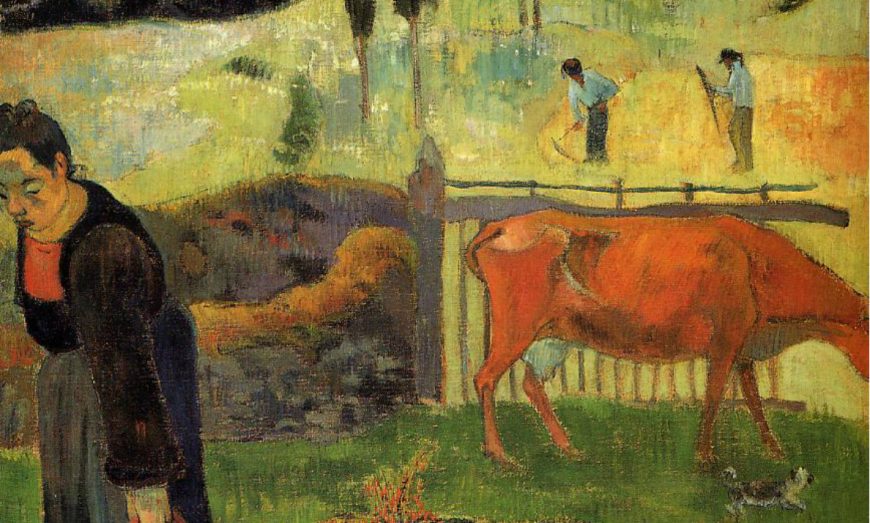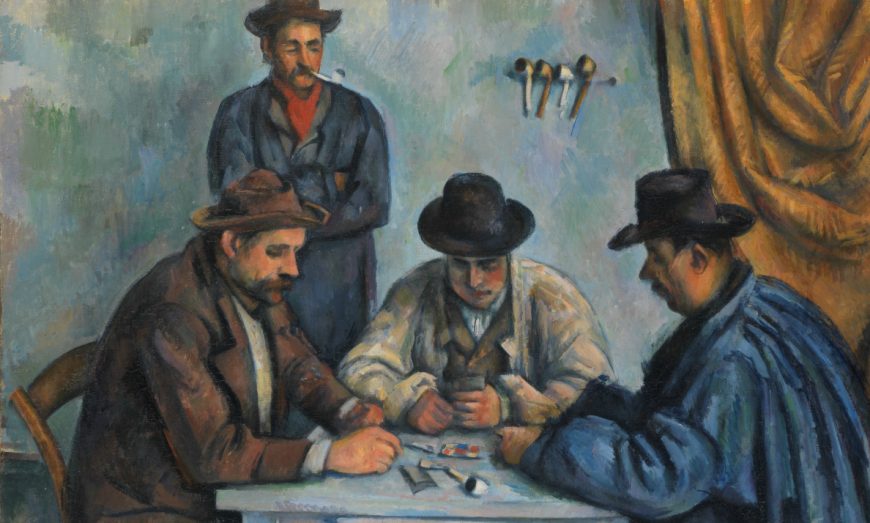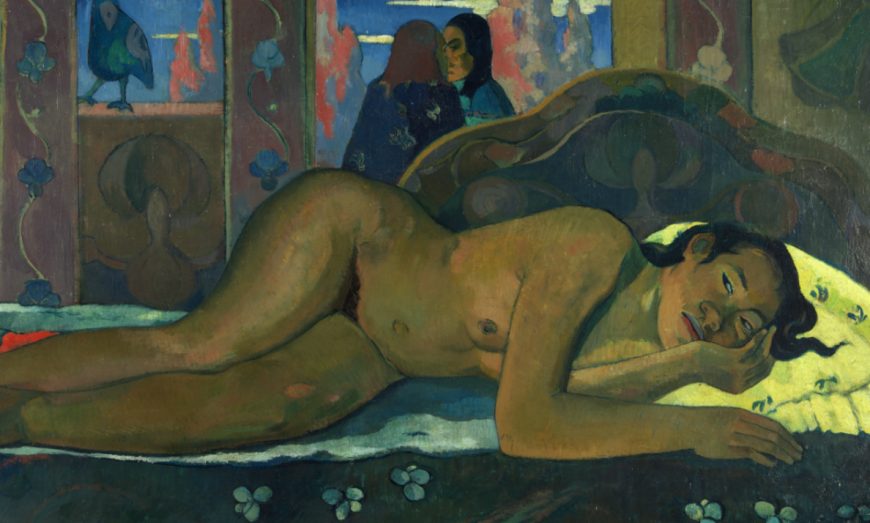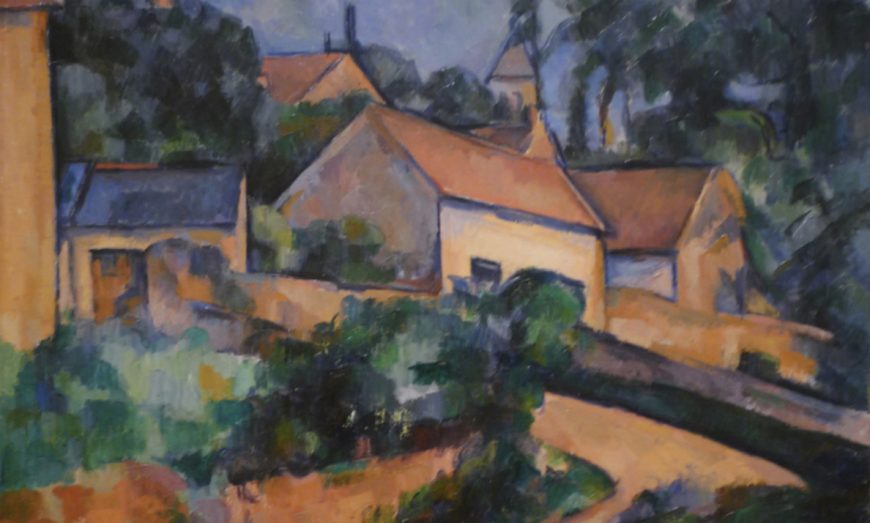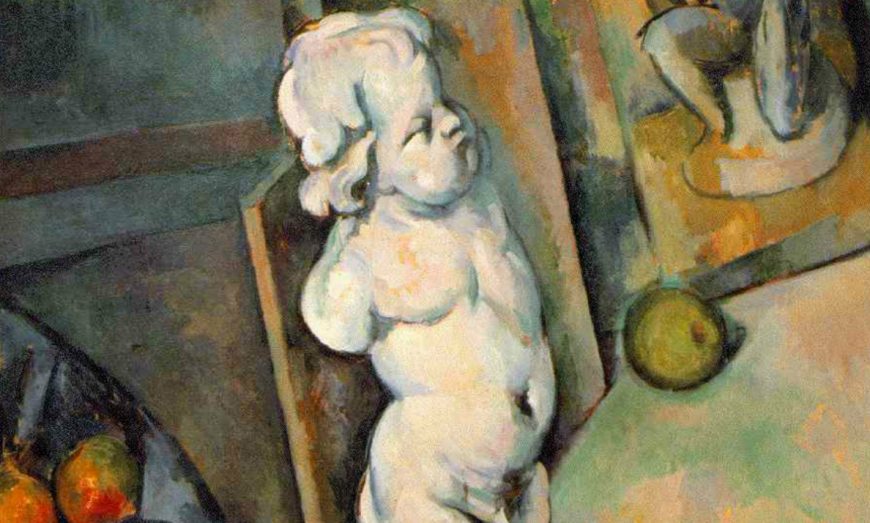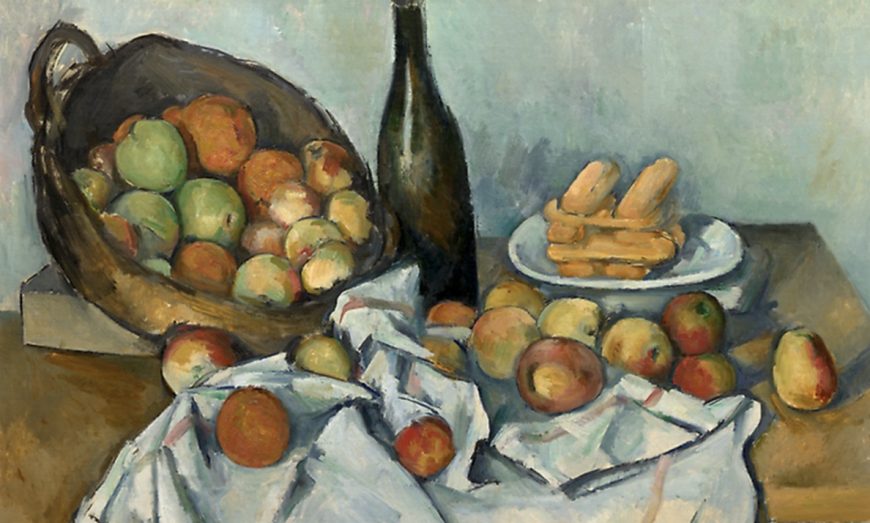What should a peasant painting smell like? Van Gogh has an opinion…
Vincent van Gogh, The Potato Eaters, 1885, oil on canvas, 82 x 114 cm (Van Gogh Museum, Amsterdam, Vincent van Gogh Foundation). A conversation with Dr. Beth Harris and Dr. Steven Zucker.
[0:00] [music]
Dr. Steven Zucker: [0:04] We’re in the Van Gogh Museum in Amsterdam, and we’re looking at “The Potato Eaters.” This is the first really ambitious painting that Van Gogh made.
Dr. Beth Harris: [0:14] It’s so different than what we normally expect of Van Gogh. Where we expect a landscape, here we have a figure painting; and we also expect brighter colors, and here we have a painting that’s intentionally dark.
Dr. Zucker: [0:26] Look at how narrow the tonal range is. You’ve got these cool gray-green blues and then only the palest light coming from that lantern, warming the faces of these peasants.
[0:38] This is 1885. It’s more than a decade after the First Impressionist Exhibition. Brilliant colors are nothing new.
Dr. Harris: [0:46] That’s true, but he’s really hooked into instead a tradition of peasant painting, and we might think about earlier Dutch artists like Israëls or French peasant painters like Millet.
Dr. Zucker: [0:57] It’s clearly self-conscious linking of the browns and the darkness to the subject, to the very meager life of these people that is so closely bound to the earth.
Dr. Harris: [1:08] So, here they are, five figures. The woman is pouring coffee. They’re serving potatoes. This is all they have to eat.
Dr. Zucker: [1:15] It’s also, importantly, a bounty that they’ve grown themselves presumably, so that there is this very close relationship between their labor and their food.
Dr. Harris: [1:23] The space is rather indeterminate. The space behind the figures don’t completely make sense. There’s a sense of the perspective not being quite right. There’s a sense of the anatomy being not quite right.
Dr. Zucker: [1:34] Almost caricature.
Dr. Harris: [1:36] Where shoulders don’t seem correctly attached to torsos and things like that.
Dr. Zucker: [1:41] Clearly, the artist is struggling with anatomy. If you look, for instance, at the hand of the man who holds the cup, there is a really problematic relationship between the cup and the hand. It’s not sitting in the palm.
Dr. Harris: [1:53] And so Van Gogh really looks like someone who doesn’t know how to paint here. In fact, this is still very early in his career. He is struggling with things like perspective and foreshortening and the human body.
Dr. Zucker: [2:02] What seems to be primary for him here is to create this authentic relationship between the rough application of paint and the rough qualities of his subject.
Dr. Harris: [2:11] It’s a kind of sincerity, and a sincerity about the lives of the peasants, but also a sincerity to himself. Remember, he’s coming from a religious place in a way. His father was a parson. He himself had studied to be a minister, although had failed at that.
[2:26] There’s something for him about this life of a peasant that is not just authentic and tied to the land but somehow more truthful. More…
Dr. Zucker: [2:36] It’s more spiritually truthful.
Dr. Harris: [2:38] And more connected to something deeper about the human condition that related to religious ideas for him. You can see he’s really worked the painting. There are layers and layers of paint here.
Dr. Zucker: [2:49] In fact, he says in one of his letters, “I am plowing on my canvases as they do in their fields.” There really is this way in which he’s willing himself into what he sees as the simpler and more spiritually authentic world.
Dr. Harris: [3:02] Clearly, his ambition at this moment is to be a peasant painter. Not only to be a peasant painter but to be a peasant.
Dr. Zucker: [3:09] An idea that certainly horrified his family.
Dr. Harris: [3:12] Yeah, you raise a son to be a respectable middle-class/upper-middle-class person who in fact should aspire higher class-wise. Here was Van Gogh coming in and aspiring downward.
Dr. Zucker: [3:22] I think that the myths that have grown up around Van Gogh, that he was poor, overshadows the fact that he comes out of a much more prosperous background.
Dr. Harris: [3:31] In fact, his uncle was an incredibly wealthy and successful print dealer.
Dr. Zucker: [3:35] And Van Gogh had earlier in his life tried to become a dealer.
Dr. Harris: [3:39] But we’re not dealing with a person who is really able to cope with the world in many ways. Van Gogh always saw himself as an outsider. He was not a stable personality.
Dr. Zucker: [3:49] And so here he is creating a contained, closely knit family environment, a place, in a sense, where he belongs.
Dr. Harris: [3:56] That was true for a huge part of his life, that he was wanting to always recreate the family that he felt estranged from and exiled from.
[4:05] And I think Van Gogh’s interest at this moment in being a peasant painter, although it’s different than what was going on in Impressionism in Paris, was really allied to other Post-Impressionist artists like Gauguin.
[4:18] A desire to leave behind the city, and its fashions, and its perfume, and its fanciness and to do something really authentic.
Dr. Zucker: [4:28] In that way, more allied with the work of, say, Courbet earlier in the century — an artist who eschewed the polish and elitism of the capital city and very self-consciously painted his rural hometown.
Dr. Harris: [4:40] I think there was something artificial-seeming about the paintings that were made for the art audience in Paris, the official exhibitions at the Salon.
Dr. Zucker: [4:51] What’s so interesting is Theo, the artist’s brother, had offered to take one of Van Gogh’s paintings and submit it to the Salon for him. This was the painting that Van Gogh sent Theo for that. Yet this is so in opposition to everything that was expected of a Salon painting.
Dr. Harris: [5:05] Well, can you imagine Theo’s face when he opened the box that contained this painting? Salon paintings for the most part had a sense of finish. They were carefully painted. There was an understanding of space and how to create an illusion of space. There was an understanding of the human body.
[5:24] And here Van Gogh was struggling, really, with both of those things.
Dr. Zucker: [5:27] Right. Van Gogh was much more interested in creating an authentic relationship between these figures and their environment.
Dr. Harris: [5:35] Here’s what Van Gogh said about this painting in a letter to his brother Theo. He wrote, “It would be wrong to give a painting of peasant life a conventional polish. If a peasant painting smells of bacon, smoke, potato steam, fine — that’s not unhealthy.
“[5:50] If a stable reeks of manure — all right, that’s what a stable is all about. If a field has the smell of ripe corn or potatoes or of guano or manure — that’s properly healthy, especially for city dwellers. Such pictures might prove helpful to them, but a painting of peasant life should not be perfumed.”
Dr. Zucker: [6:06] And this painting is not.
Dr. Harris: [6:09] No. This idea of painting something healthy for city people I think is something that he has in common with Gauguin and other Post-Impressionist artists. The idea of righting the wrongs of the industrial modern world.
Dr. Zucker: [6:23] This idea that art has a agency, has a political agency, a moral agency in the world.
Dr. Harris: [6:29] And the world that the Paris art scene catered to was this upper-middle-class world.
Dr. Zucker: [6:34] That was stifling. In this way Van Gogh shares quite a bit with everybody from Courbet through Manet and through the Impressionists.
Dr. Harris: [6:42] The avant-garde.
Dr. Zucker: [6:43] Here in the 19th century.
[6:44] [music]


